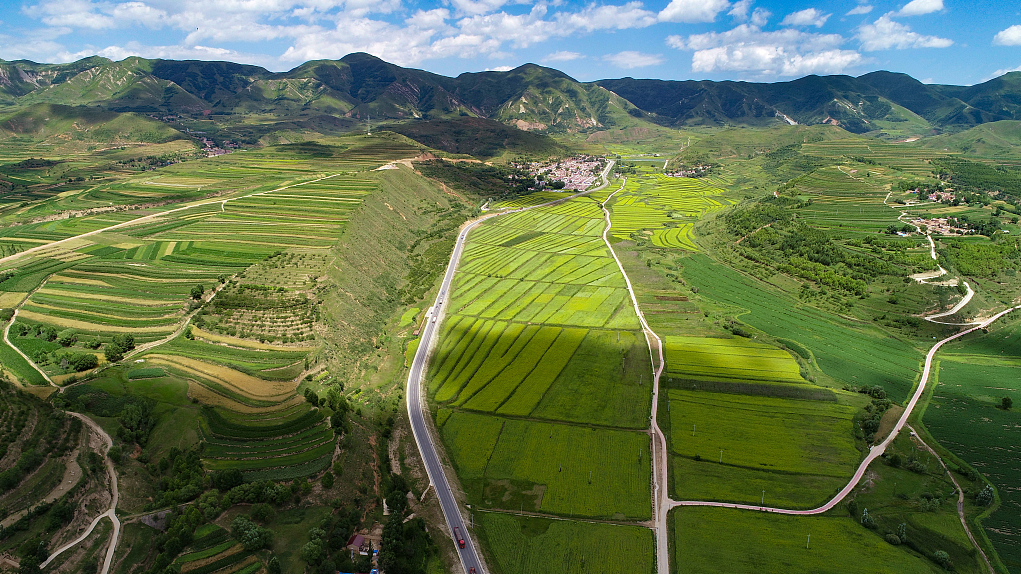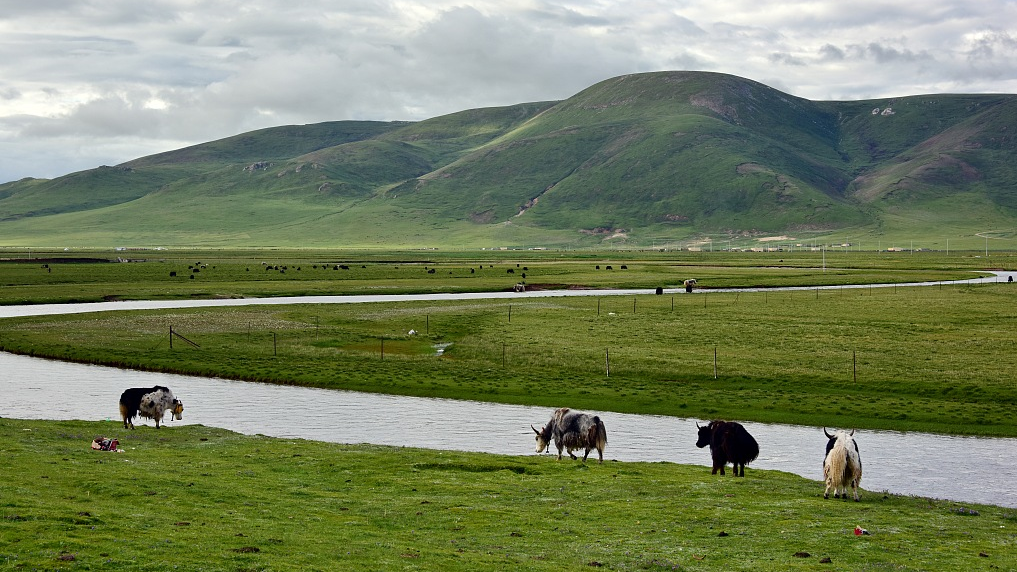
Xihaigu Prefecture was classified by the United Nations as "the most unfit place for human settlement" in the 1970s. /CFP
Xihaigu Prefecture was classified by the United Nations as "the most unfit place for human settlement" in the 1970s. /CFP
Editor's note: 2023 is the first full year for implementing the guiding principles of the 20th National Congress of the Communist Party of China. Ahead of this year's Two Sessions, China's key annual political meetings, CGTN presents "China Marches On," a special series that takes an in-depth look at the country's endeavors in advancing Chinese modernization.
Once called "the most unfit place for human settlement" by the United Nations in the 1970s, Xihaigu Prefecture in northwest China's Ningxia Hui Autonomous Region is now on the road to ecological poverty alleviation and prosperity.
Located on the Loess Plateau, Xihaigu suffered soil erosion as its terrain is dominated by mountains and hills with low vegetation and loose soil. The barren land made it one of the poorest areas in China.
However, the prefecture has shaken off all such tags through the government and people's efforts.
"For over a decade, afforestation, water conservation and poverty alleviation have been employed to protect the environment, eliminate poverty and vitalize rural areas," said Qi Yongxin, the area's delegate to the 20th National Congress of the Communist Party of China (CPC).
Thanks to years of afforestation efforts, Guyuan, a part of the prefecture, is reaping ecological dividends. It posted a cumulative gross forestry output of 2.05 billion yuan ($295 million) and witnessed significant boosts to tourism and beekeeping industries.
The development in Xihaigu represents China's achievements in ecological conservation and green development in recent years.

Plantations on rugged terrains in Xihaigu Prefecture, northwest China's Ningxia Hui Autonomous Region, July 29, 2021. /CFP
Plantations on rugged terrains in Xihaigu Prefecture, northwest China's Ningxia Hui Autonomous Region, July 29, 2021. /CFP
Yang Yu, a special commentator for China Media Group, says that unlike the Western model of development, China strives to avoid the Environmental Kuznets Curve – a situation where the environment deteriorates till a certain level of income is attained and only after that the money is invested back into the environment.
To pursue the modernization of a country whose population ranks first worldwide but per capita resources are far below the global average, ecological protection is always high on the agenda of Chinese President Xi Jinping, who believes that "lucid waters and lush mountains are invaluable assets."
Xi's report to the 20th CPC National Congress stressed that the Chinese modernization is the modernization of harmony between humanity and nature.
"Humanity and nature make up a community of life. If we extract from nature without limit or inflict damage on it, we are bound to face its retaliation," reads the report. "China is committed to sustainable development and to the principles of prioritizing resource conservation and environmental protection and letting nature restore itself."
Xihaigu has first-hand experience in this area. Excessive reclamation and grazing in the 1970s worsened the locals' livelihood. It's the reforestation efforts that brought them relief.
Jiao Jianpeng returned home to Xihaigu to develop rural tourism and benefit from local government's program of returning marginal farmland to forests and grasslands. After Jiao's efforts, Longwangba Village received 190,000 tourist trips last year, making a per capita net income of 11,200 yuan.

Scenery of the Sanjiangyuan National Park in northwest China's Qinghai Province, July 24, 2020. /CFP
Scenery of the Sanjiangyuan National Park in northwest China's Qinghai Province, July 24, 2020. /CFP
Reforestation is just one of the many measures China has taken in recent years to advance ecological civilization and green development.
In recent years, China has strengthened eco-environmental conservation and restoration by setting up a new type of protected area (PA) system, drawing up ecological conservation red lines nationwide and pushing for the integrated conservation and systematic restoration of mountains, rivers, forests, farmlands, lakes, grasslands and deserts.
According to the white paper "China's Green Development in the New Era," China's PA system takes national parks as the mainstay, supported by nature reserves and supplemented by nature parks. China has already created its first batch of five national parks including the Giant Panda National Park.
As of the end of 2021, nearly 10,000 PAs of various types and levels had been established, covering more than 17 percent of China's land area, bringing under effective protection 90 percent of its natural terrestrial ecosystem types and 74 percent of key state-protected wildlife species, according to the white paper.
The eco-environmental conservation red lines (ECRLs), which cover exceedingly fragile areas and areas of potentially vital eco-environmental value, are the lifeline of national eco-environmental security. Over 30 percent of China's land area is now under the protection of ECRLs, according to the white paper.
China will continue to pursue a model of sound development featuring improved production, higher living standards and healthy ecosystems to ensure the sustainable development of the Chinese nation, according to the report delivered by Xi at the 20th CPC National Congress.